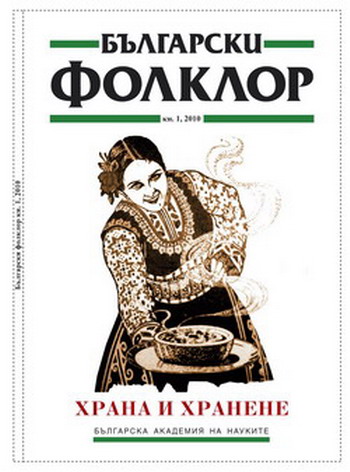„Защо змиите ядат жаби”, или за диетарните норми в една история от времето на Потопа
“Why Do Snakes Eat Frogs”, or, On the Dietary Laws in a Folk Narrative about Noah’s Flood
Author(s): Galina LozanovaSubject(s): Customs / Folklore
Published by: Институт за етнология и фолклористика с Етнографски музей при БАН
Summary/Abstract: The story of what happened on the Noah’s Ark after the Devil succeeded to sneak into it (AT 825) is well-known to both Christian (C) and Muslim (M) narrators in Bulgaria. It comprises of the following motifs – some of them have parallels in Muslim or Christian sources: (1) The Devil enters the Ark holding to the tail of the donkey/goat and is involuntarily invited by Noah himself; (2) The Devil in the form of a mouse makes a hole in the bottom of the Ark; or creates mice/persuades the mouse to gnaw the bottom of the Ark; in some variations mice act independently of Devil’s incitement (C); (3) A leak appears and two animals help to solve the problem: the cat who eats the naughty mouse (M); and the snake who stops up the leak with its body (curling up/using its tail – C+M). (4) The snake is rewarded: grateful animals and Noah promise that from that time on it could eat only “the most delicious meat/blood in the world”. (5) The mosquito is sent to taste the blood of all animals and to tell the others the results of the inquiry – human meat/blood appear to be “the most delicious”. (6) The swallow intercepts the mosquito on its way back and pecks out its tongue to prevent him telling the bad news. (7) The angry snake tries to catch the swallow but only takes hold of some feathers of its tail; (8) The mosquito can pronounce only “zh-zh-zh” and animals decide he wants to say that frog’s (Bulg. ‘zhaba’) is “the most delicious meat/blood in the world”. (9) Noah is angry with the snake and cuts its body to pieces and then throws it in the fire. The story is rife with etiological motifs of three types: 1) new animals appear (mice, cats, pigs – mainly in Muslim narratives; bloodsucking vermin – fleas, lice); 2) some birds, insects and reptiles change their appearance (swallow, mosquito, snake); 3) “natural” dietary habits of some animals are established (cats eat mice; snakes – mice and frogs; vermin – blood; pigs – waste products). Only the snake’s wish to eat human meat/blood seems to other animals “unnatural” and “sinful” and they unite together against the snake to prevent it. The motif of the snake-“perfidious helpful animal” who is, most probably, the snake of Genesis, 3: 1—5 is further analysed in the paper at the background of some common themes to the Abrahamic religions: the parallel between the Flood story and the story of the Creation; the sinfulness of the pre-diluvian generations and the violation of the hierarchy between man and animals; and finally – the prohibition to shed human blood and the establishment of new dietary laws in Noah’s Covenant after the Flood.
Journal: Български фолклор
- Issue Year: XXXVI/2010
- Issue No: 1
- Page Range: 053-072
- Page Count: 20
- Language: Bulgarian
- Content File-PDF

